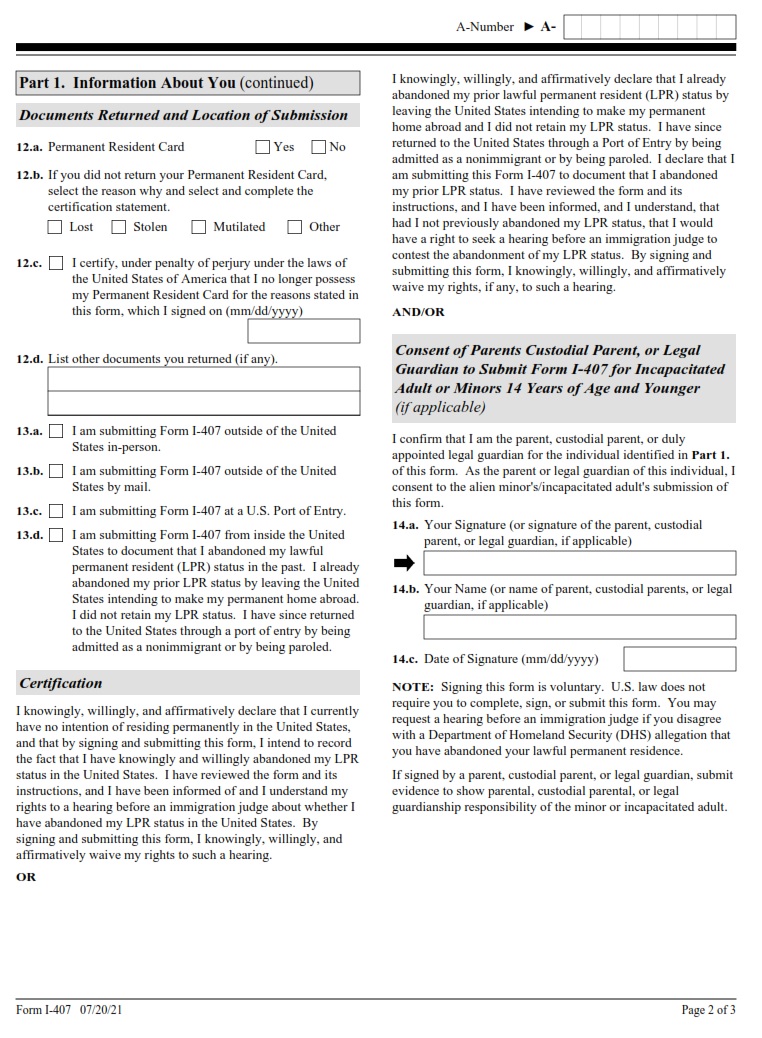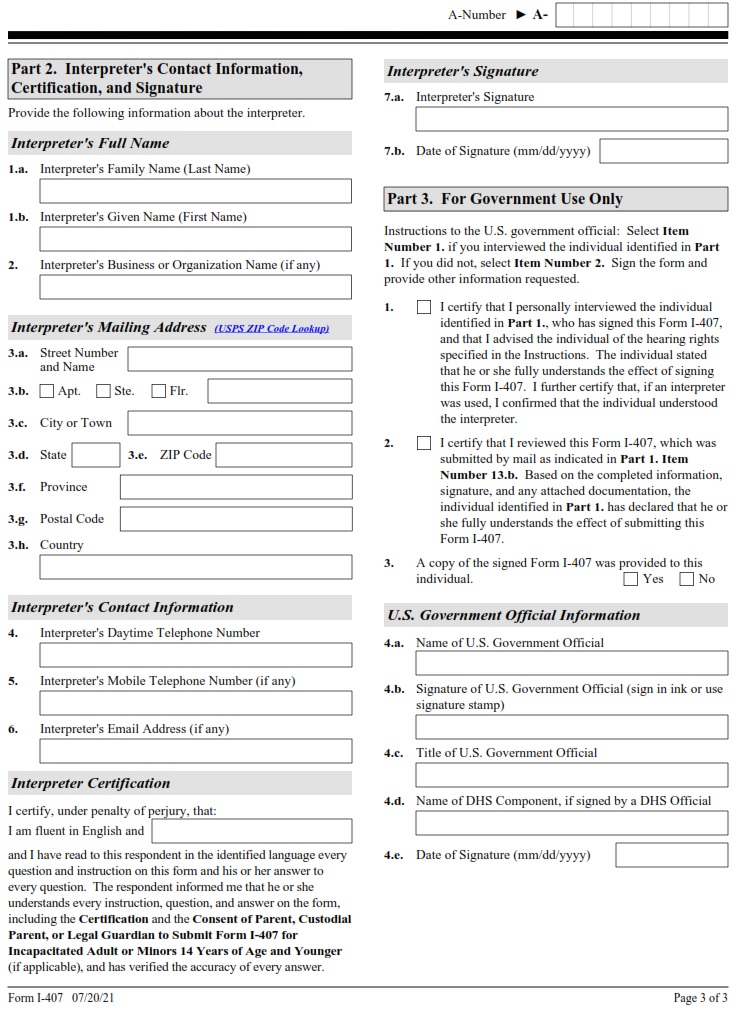Table of Contents
FREE-ONLINE-FORMS.COM – I-407 Form – Record of Abandonment of Lawful Permanent Resident Status – When a person immigrates to the United States, they are granted the status of Lawful Permanent Resident (LPR). This status is typically held by individuals who wish to live and work in the United States on a permanent basis. However, at times, an LPR may decide that it is necessary to abandon their status and leave the country. In such cases, the individual must complete and submit Form I-407 – Record of Abandonment of Lawful Permanent Resident Status.
Download I-407 Form – Record of Abandonment of Lawful Permanent Resident Status
| Form Number | I-407 Form |
| Form Title | Record of Abandonment of Lawful Permanent Resident Status |
| Edition Date | 7/20/2021 |
| File Size | 354 KB |
What is an I-407 Form?
The I-407 Form is an official document used by United States Citizenship and Immigration Services (USCIS) to record the abandonment of a Lawful Permanent Resident (LPR) status. The LPR must sign the form in order for it to be valid. This form is necessary for individuals who have obtained permanent residency in the U.S. so that they can relinquish this status when they leave the country and do not intend to return as a resident or citizen. It also serves as evidence that an individual has surrendered any rights granted under their LPR status, including their right to receive government benefits associated with this status, such as social security payments or work authorization.
Additionally, it acts as evidence of intent not to re-enter the U.S., which may be required if the individual applies for visas or other immigration benefits in future years. Finally, this form is important because it helps USCIS keep up-to-date records on who is legally residing in the U.S. and those who have voluntarily left and abandoned their residence here permanently.
Where Can I Find an I-407 Form?
The I-407 form, also known as the Record of Abandonment of Lawful Permanent Resident Status, is a document used to formally abandon an individual’s lawful permanent resident status. It is issued by U.S. Citizenship and Immigration Services (USCIS). The I-407 form is available on USCIS’ website in both English and Spanish. In order to complete the form, applicants must provide their name, date, and place of birth, address in the United States, Alien Registration Number (if known), current immigration status information, and any other relevant information pertaining to their immigration status.
The applicant must also sign the document before submitting it to USCIS for processing. Additionally, there may be fees associated with filing an I-407 form depending on the location where it is being filed. Once submitted to USCIS and approved, individuals, will no longer be considered permanent residents and will lose their right to remain in the United States indefinitely or access certain benefits associated with lawful permanent residency.
I-407 Form – Record of Abandonment of Lawful Permanent Resident Status
The I-407 form is a document that allows lawful permanent residents of the United States to voluntarily abandon their lawful permanent resident status. Filing this form is an important decision, as it may have significant immigration consequences for the affected individual and any family members who are also seeking to maintain their lawful status in the U.S. When a person decides to complete an I-407, they must sign it in front of an authorized immigration officer and provide evidence that they are abandoning their Lawful Permanent Resident (LPR) status.
After signing the I-407, the U.S Customs and Border Protection (CBP) will issue a record of abandonment which acts as proof that you have abandoned your LPR status in the U.S. This document should be kept with other important personal documents or copies should be made for later reference. Once signed and accepted by CBP, you no longer have valid LPR status in the United States and may not receive certain benefits reserved for those with green cards such as applying for citizenship or reentering without permission from USCIS.


